The AMD Ryzen 3 1300X and Ryzen 3 1200 CPU Review: Zen on a Budget
by Ian Cutress on July 27, 2017 9:30 AM EST- Posted in
- CPUs
- AMD
- Zen
- Ryzen
- Ryzen 3
- Ryzen 3 1300X
- Ryzen 3 1200
Ashes of the Singularity: Escalation
Seen as the holy child of DirectX12, Ashes of the Singularity (AoTS, or just Ashes) has been the first title to actively go explore as many of DirectX12s features as it possibly can. Stardock, the developer behind the Nitrous engine which powers the game, has ensured that the real-time strategy title takes advantage of multiple cores and multiple graphics cards, in as many configurations as possible.
As a real-time strategy title, Ashes is all about responsiveness during both wide open shots but also concentrated battles. With DirectX12 at the helm, the ability to implement more draw calls per second allows the engine to work with substantial unit depth and effects that other RTS titles had to rely on combined draw calls to achieve, making some combined unit structures ultimately very rigid.
Stardock clearly understand the importance of an in-game benchmark, ensuring that such a tool was available and capable from day one, especially with all the additional DX12 features used and being able to characterize how they affected the title for the developer was important. The in-game benchmark performs a four minute fixed seed battle environment with a variety of shots, and outputs a vast amount of data to analyze.
For our benchmark, we run a fixed v2.11 version of the game due to some peculiarities of the splash screen added after the merger with the standalone Escalation expansion, and have an automated tool to call the benchmark on the command line. (Prior to v2.11, the benchmark also supported 8K/16K testing, however v2.11 has odd behavior which nukes this.)
At both 1920x1080 and 4K resolutions, we run the same settings. Ashes has dropdown options for MSAA, Light Quality, Object Quality, Shading Samples, Shadow Quality, Textures, and separate options for the terrain. There are several presents, from Very Low to Extreme: we run our benchmarks at Extreme settings, and take the frame-time output for our average, percentile, and time under analysis.
For all our results, we show the average frame rate at 1080p first. Mouse over the other graphs underneath to see 99th percentile frame rates and 'Time Under' graphs, as well as results for other resolutions. All of our benchmark results can also be found in our benchmark engine, Bench.
MSI GTX 1080 Gaming 8G Performance
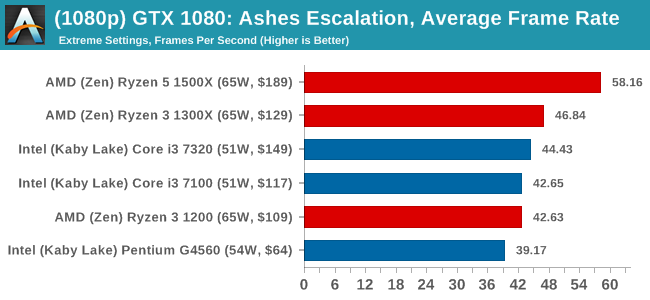
1080p

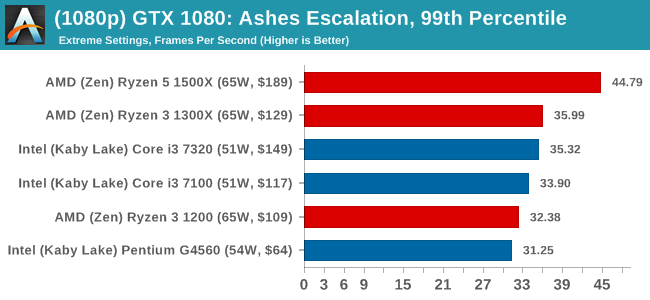
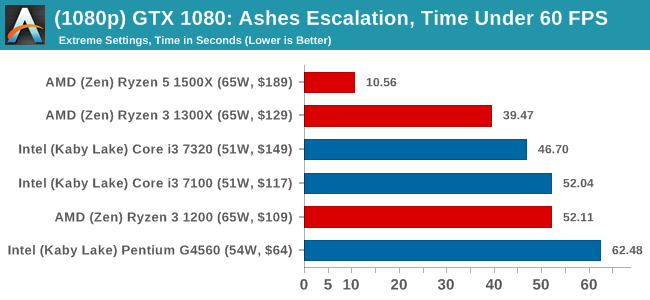
4K
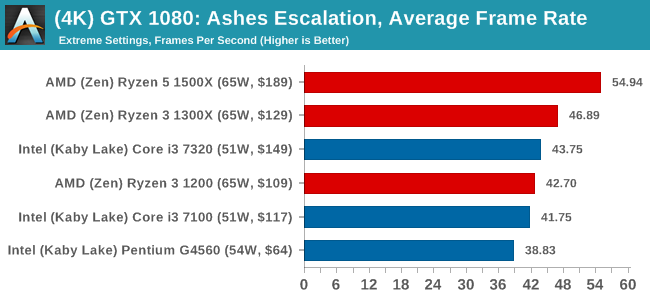
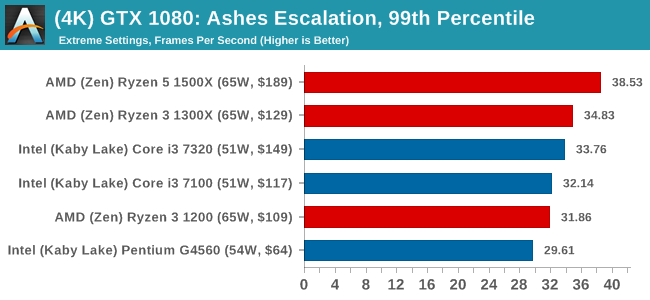
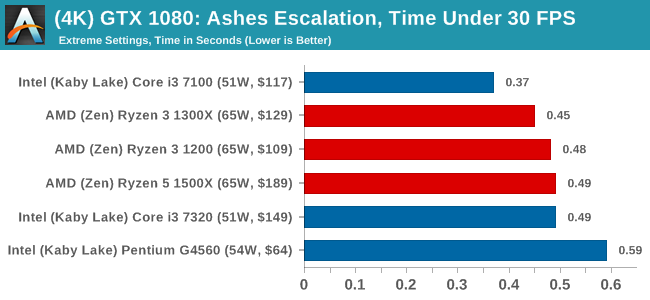
ASUS GTX 1060 Strix 6GB Performance
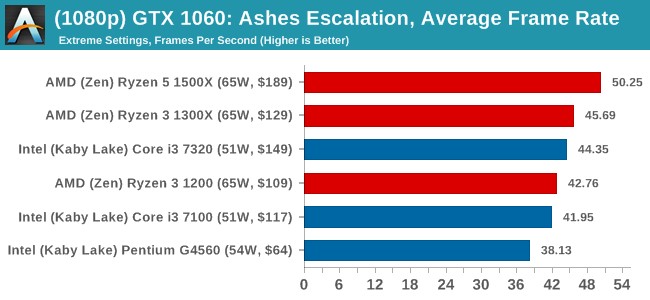
1080p

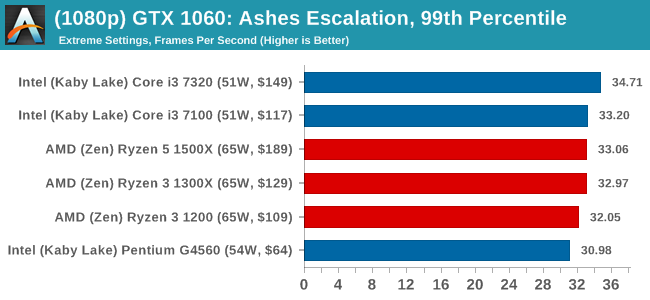
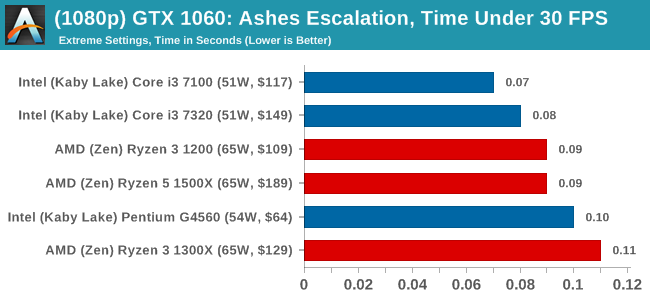
4K
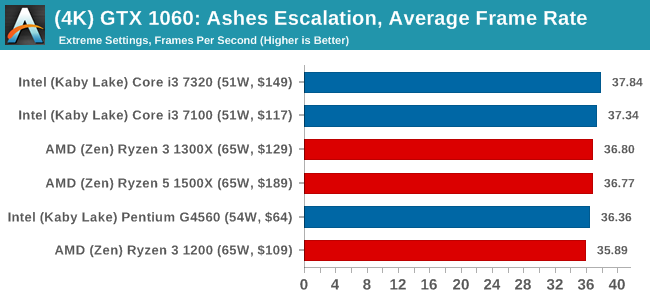
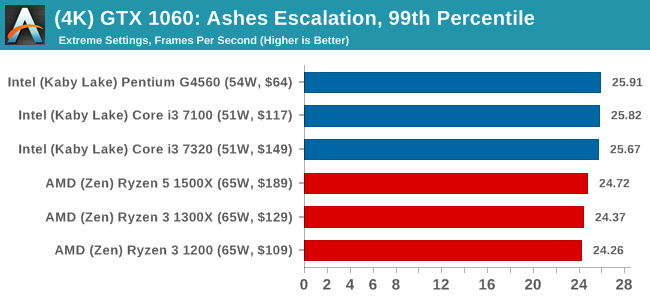
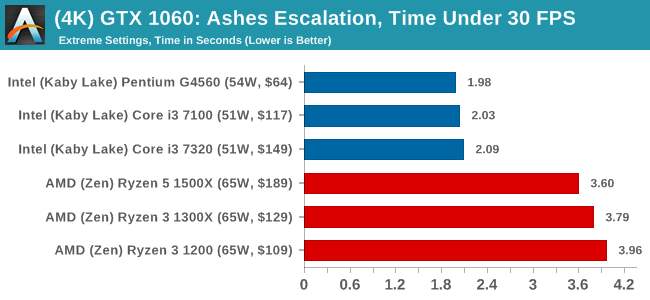
Sapphire R9 Fury 4GB Performance
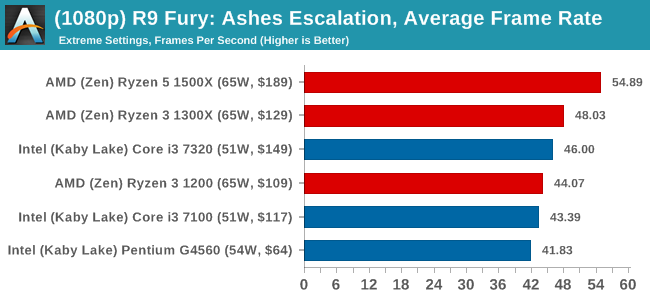
1080p

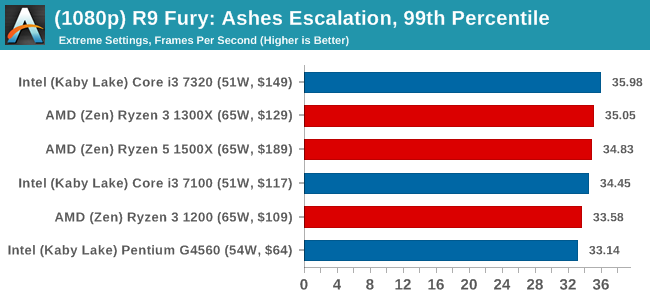
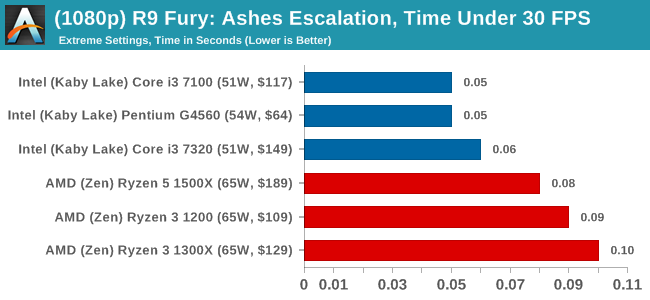
4K


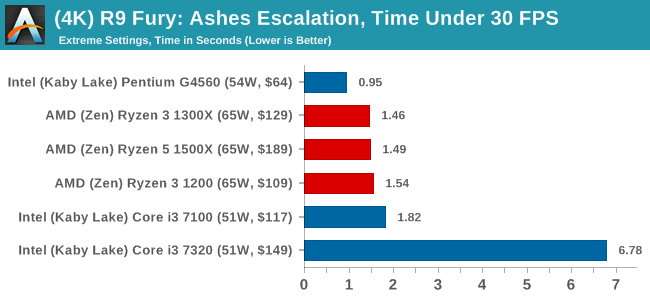
Sapphire RX 480 8GB Performance
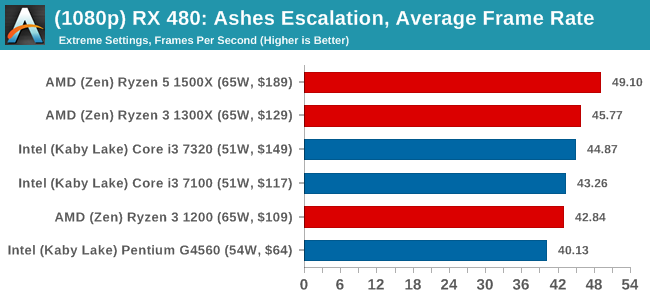
1080p

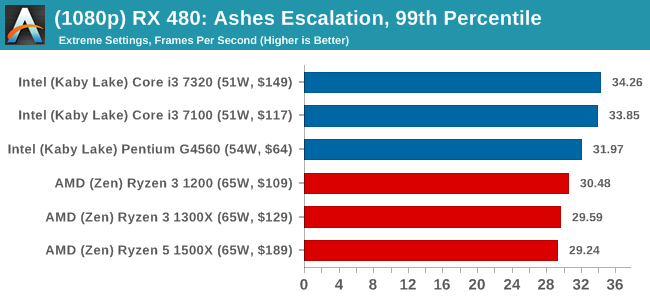
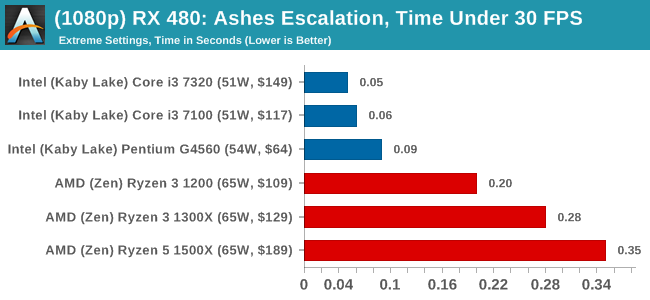
4K
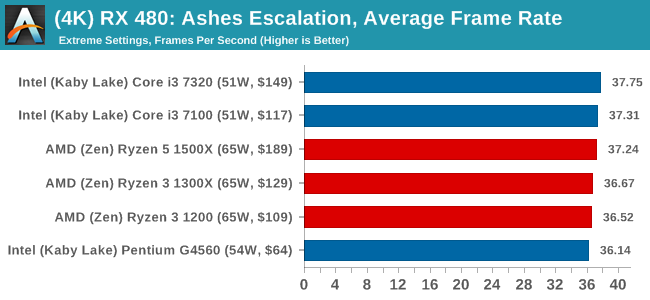
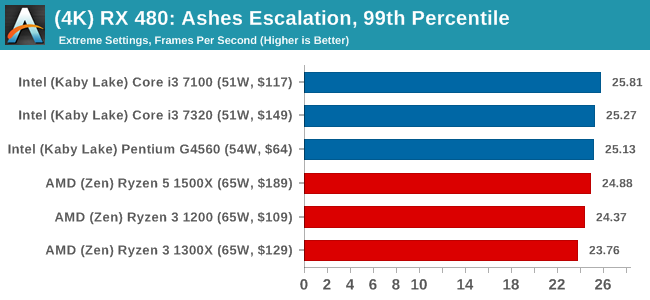













140 Comments
View All Comments
dave_the_nerd - Thursday, July 27, 2017 - link
Yes, obviously. That would be terrible.Oxford Guy - Thursday, July 27, 2017 - link
I'm glad you're not a tech reviewer. You could just say "Obviously" for every technical detail and that would be your article.Gothmoth - Thursday, July 27, 2017 - link
you can overclock the cheap AMD cpus... what about the intels?i am to lazy to check but are the testets intels k models? i guess not.
ddhelmet - Friday, July 28, 2017 - link
One thing I am really curious about is Citra performance. It would be an important test for single thread performance. All about that IPC.serendip - Friday, July 28, 2017 - link
Sorry but I don't see the point of these chips. An i3 is supposed to be a cheap do-everything CPU for basic business and school PCs. The Ryzen 3 not having a GPU really hurts its chances in those segments and it probably won't get picked up by OEMs. AMD needs mass market sales right now and Ryzen APUs can't come soon enough.I'm also wondering if yields are good enough that Ryzen 7s are the main chips being produced, with few 5s and 3s left over from the 7s that didn't meet spec.
Outlander_04 - Saturday, July 29, 2017 - link
The core count of the Ryzen chips is going to be a significant advantage over any dual core .Adding a basic graphics card will cost about $30 . For that you free up system RAM that the onboard would otherwise be using, and you get decent drivers that let you make some adjustments that intel removed when they dumbed down their drivers a few years back
serendip - Saturday, July 29, 2017 - link
Yeah but most office tasks run fine on 2 cores. Most users probably won't even notice they're using quad core processor.That $30 extra is a lot when it comes to speccing thousands of machines. A cheap discrete GPU is also another potential point of failure that large enterprises might not want on a big rollout. I understand the enthusiast reasoning for a cheap but powerful CPU like the Ryzen 3 paired with a decent midrange card, but this setup doesn't make sense for large corporate orders. AMD needs to sell lots of chips to large clients to survive.
Outlander_04 - Saturday, July 29, 2017 - link
It's not just the "Office tasks". Its the network services, antivirus and updating that goes on in what should be the background, but is not when you have a dual-core. I speak from experience. The HP desktops we have at work can be frustrating.buxe2quec - Friday, July 28, 2017 - link
Posting a review with placeholders for the benchmarks is definitely not professional.Delay it two days and post it in full, or split it in two reviews.
Looks like clickbaiting...
supdawgwtfd - Friday, July 28, 2017 - link
Ian. Your a shill. Or you just completely biased.Every single other review i have read has said the Ryzen 3 it the better option. In price and performance.
WTF has happened to Anandtech? Why are you guys spewing BS? Why can't you be unbiased?
Seriously?
Have been reading the site for almost 20 years. I think i will now have to officially NOT come here again...